When Salomon first introduced the SPK in 2006 it was something really new in the world of park boots. Over the years the design evolved, adding new features such as the soft toe and the leather covering on the SPK Pro. It became a favourite with park riders who enjoyed the cushioning and padding not available in other boots. Last season when Salomon announced they were replacing the SPK with a new boot, reactions were mixed. Some were disappointed that the wide last was gone, while others questioned why some key features from the SPK were missing from the new version. I had been a huge fan of the SPK and the SPK Pro, riding them almost exclusively since I got my first pair in 2006, so I was really interested to see what this new boot could do.
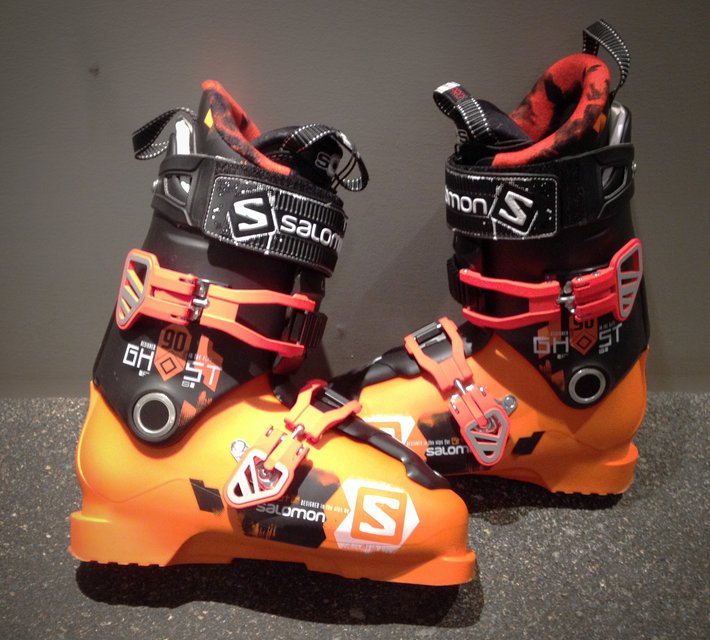
One of the things which made the SPK popular was the relatively wide last of the boot at 104mm. This is probably the one of the biggest changes in the new design, with the forefoot being narrowed down to 100mm. There are a number of reasons for this redesign, but a big factor was to open the Ghost FS up to users who before found the SPK too wide. Shell checking the Ghost and the SPK side by side, I did find that the SPK was quite a bit wider in the forefoot; however skiers with wider feet can rest assured that the shell can be easily expanded to give a similar forefoot as the SPK.
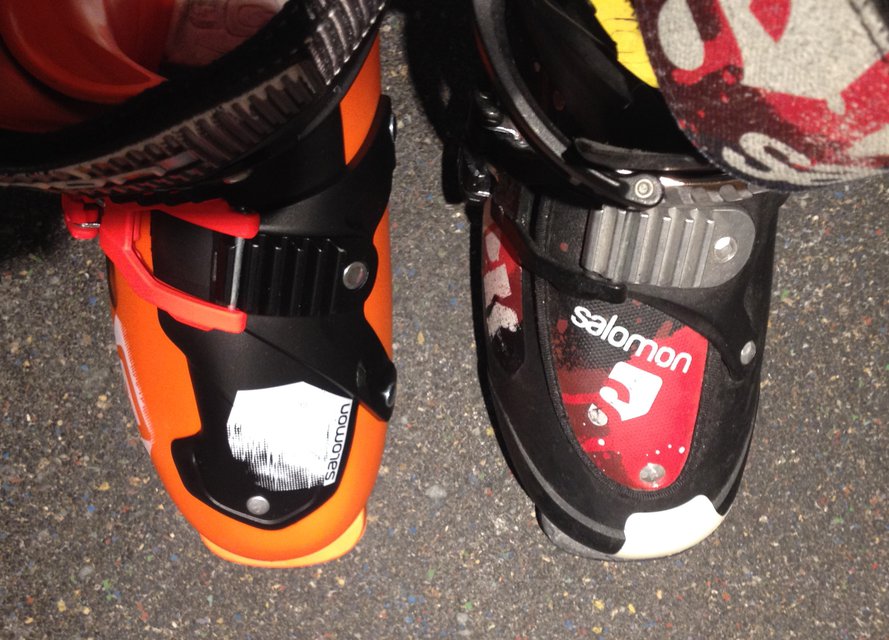
The SPK's soft toe was a feature I always really liked and losing it on the Ghost was a disapointment. The reason for its absence is due to the technical nature of incorparating it into the new shell, but I was told it may not be gone for good. I was tempted to punch the big toe area of the Ghost before I even skied it, but after shell checking and in the interest of giving an out of the box review of the fit, I decided against it.
Something surprising was the intial length in the shell check. The SPK has a BSL of 307mm (in my size, 26) with the Ghost being slightly shorter at 305mm. However, I found there was around 24mm space behind my heel in the Ghost compared to 22mm in the SPK. So although the Ghost has a shorter BSL, it also has a longer internal length; partly due to the toe box. Although the SPK's forefoot is wide, the toe box narrows pretty quickly and I found my big and little toes touched the sides long before my toes touched the end. In the Ghost the toe box fits a little wider thanks to a more anatomical shape, which meant I could get my toes right to the end of the shell. All this was good news in the absence of the soft toe.
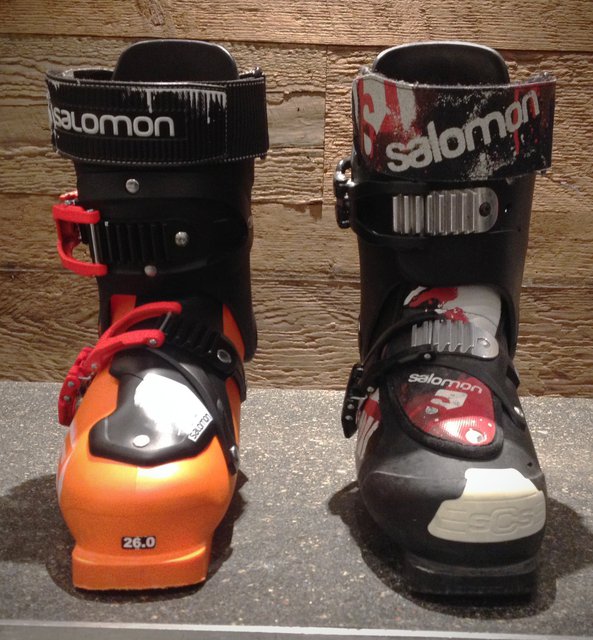
Whilst shell checking the boots side by side it's easy to notice the different buckle placment. The foot buckle is similar, but the cuff buckle is around 15mm lower on the ghost. The power strap is at roughly the same height as the SPK and the cuff height is very similar, while fit-wise the cuff is a little different on the Ghost and the clog (foot part of the boot) comes up much less. The top of the clog is around 20mm lower compared to the SPK, so the cuff also fits slightly closer on the Ghost, giving it more forward lean.
The final area of the fit I looked at was the instep, ankle and heel. Instep-wise the actual height is pretty similar, however it is much more 'foot shaped' on the Ghost. The top of the boot is much more curved and in most cases gives a much better fit to the top of the foot compared to the more squared off box fit of the SPK. The heel and ankle are similar, with the Ghost being just slightly narower.
Overall there are slight differences, but I do think the overal fit has been improved, which should apeal to new users without forgetting about existing customers. More importantly though; how do they ski?
Day One
I did no work to the boots initaly, just took them out of the box, exchanged the insoles with my footbeds and headed up Whistler. To say the fit was tight would be an understatment. By the time I got to the top of the Creekside gondola (a pretty short ride) my feet were going from pain to numbness. I headed up the red and did a couple of laps under the green chair. The fit was so tight I could only actually ski with the power strap done up, as trying to do up either buckle would complete impede actually skiing. I did about three laps like this and decided to head down to the Salomon shop in town to see what I could do to inprove things. I should add that I do have a pretty high volume foot and the boot I was skiing in before this test was an Atomic Waymaker; which is better suited. If I was fitting this boot I would have done quite a bit of work before sending the customer to ski it, but I wanted to see what the intial fit was like and what work could be done to the boots if needed.
The first thing I wanted to do was mould the liners, as I knew I could create some more space this way. I put the liners on the blowers and the shells in the oven for a couple of minutes. It's not a custom shell boot but I figured it couldnt hurt to slightly expand the shell, even if it may shrink back. I padded my feet up, forced the boots on and stood outside in the cold for five minutes.
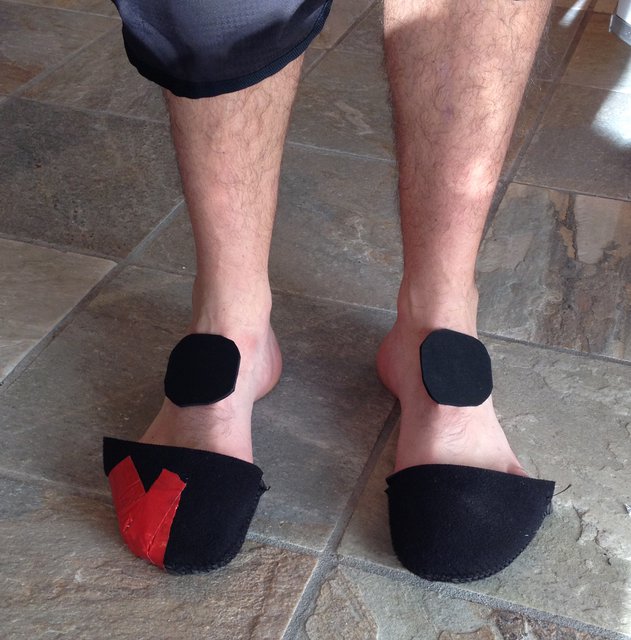
I went for quite a bit of instep padding and a large Toe cap.
After moulding, I headed up Blackcomb to see had been achieved. Straight away the fit was much better, still tight, but I was now able to do up both buckles.
By the end of the day they were pretty good all over, although just a bit tight on top. I headed back down to take a look at the boot board. The old SPK had great padding under the heel, but the rest of the shell had no removable boot board, which meant fitting could be hard. The new version solved this problem by using the soft boot board found in the other Ghost boots, while adapting the heel in a pretty unique way to give users the same level of impact protection as the SPK.
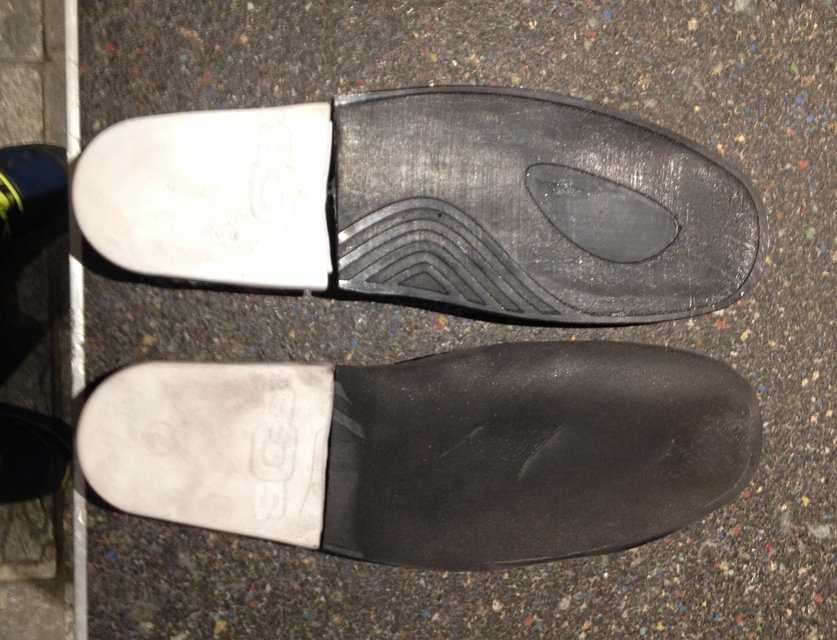
What Salomon have done is taken a regular soft boot board and cut away the heel section, adding the soft gel pad found in the SPK. This means the Ghost has even better impact protection, as the whole sole is soft rather than just the heel. Along with the added benefit of forefoot protection, the fact that the boot board can now be ground down to easily add volume to the shell is a big bonus.
Day 2
Now I had the fit dialled in it was time to really see what the boots could do. I started off doing some groomer laps, popping off side hits and generally messing about. The flex of 90 had seemed quite low to me, but I found that the forward stiffness was pretty good. I wasn't over flexing the boots and they were supporting me quite well, so I could still push into the boot to drive the ski, but I did notice something interesting. Laterally they were a bit softer than I expected and there was some give in the cuff. Not a lot, but it was noticeable after skiing a stiffer boot for a while. After testing the Ghost out for a few warm up laps I thought it was time to take them to their real home; the park.
The Blackcomb park is still growing but there's pretty good selection of jibs and jumps. I started with a few of the rail lines, which was where I first really noticed what the lower cuff buckle offered. That lateral softness I found carving the boot now gave a free feeling in the park, letting you pop a bit more naturally. The clog not extending as high in the cuff and the buckle being placed lower means you get a much smoother movement compared to other boots. This was really useful for slower jibs and rails where you really need to pop. The lower buckle placement also meant there was very little pressure on the shin, when combined with the cushioned tongue and laces that fit very snugly.
I did wonder how the slightly softer cuff would perform on jumps and if it would lead to wash outs, but again the more natural movement aided in take offs and so long as you are pretty well balanced then landings are no problem. I took a few big hits during the day and never really noticed, so the new boot board seemed to be doing its job, with no issues to report from my toes either.
The redesigned foot shape offered great control with no internal movement. The new instep gave a consistent hold across the top of the foot and I never experienced any heel lift, even with the cuff buckle relatively loose. This is due to the increased forward lean that forces the heel back into the liner where it is held very snugly.
I took a few more laps out of the park and found if I was less aggressive on my edges, the boots were really fun. They are certainly no race boots, but offer one of the comfiest and most natural flexes I have ever used.
Day 3
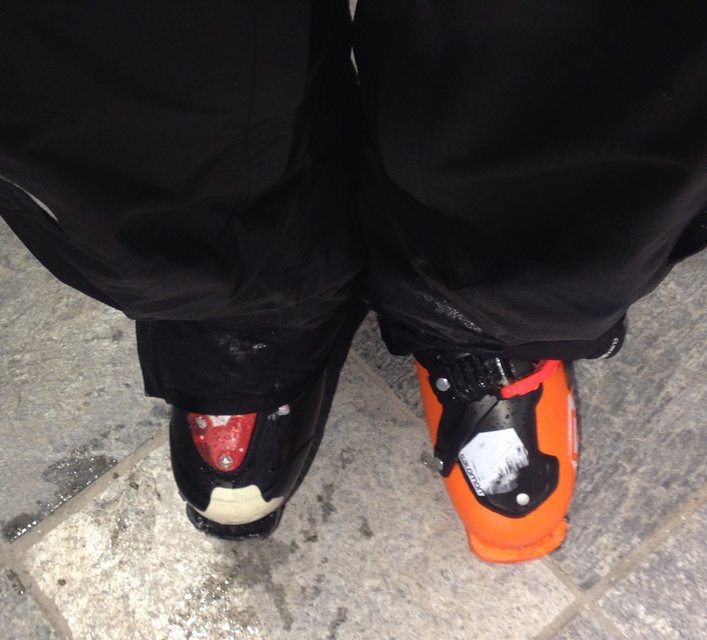
For my final day testing I decided the ultimate test would be to ski both boots at once. Straight away the different feel in the cuff was obvious, with the SPK having a much less natural flex. It really felt like you were leaning against something. In comparison the Ghost felt supportive and really natural on the shin. The other big difference was that the SPK's instep was much tighter right on top of my foot in a localised zone. This got worse as the cuff flexed and pressed down on the clog. This is probably just my foot, but the Ghost's instep is certainly a better overall fit.
One thing I was interested in comparing was the impact protection and I got the chance pretty quickly. First run into the freshly built shack booter and I came up about a foot short, hitting the knuckle hard. The knee of the leg wearing the SPK instantly hurt - it was a pretty big impact and I have had this pain in my knees before - but I felt nothing on the Ghost side. I put this partly down to the added forward lean. In the SPK I landed pretty much straight legged, so the impact went straight up the leg, while on the Ghost side my knee was slightly bent, so could better soak up the impact. This was the moment I was completely sold on the new boot.
There was a big difference in general skiing too. The new shape really holds your foot, giving much more control, especially with wider skis which get deflected easier.
Overall, the Ghost really is a big improvement. The cuff and instep simply do not work as well in the SPK and the level of control is lower in the predecessor.
Conclusion
Going into this review I really did not know what the outcome would be. For years I would have said the SPK was one of the best options for the park, so for a boot to overtake it would be a pretty big deal. But I think the Ghost has done it, actually far exceeding what the SPK ever offered.
In the park the changes to the cuff mixed with the redesigned foot shape make the Ghost a great option; there are not many boots I have found that give such a natural feel and no shin pressure. They still offer all the support you need for jumps and larger rails, but the added mobility at slower speeds is awesome. Bigger riders may find they want a stiffer flex, and adding a second bolt to the pre-shaped holes in the cuff will increase the flex to 100. Don't be put off by the softer cuff though, obviously if you're a racer and you really push on your edges, these won't suit you, but if you like a more laidback style then these are the boots for you.
I do think there is room for improvement though. The lack of replaceable soles is a disappointing, as we know park riders are not known for looking after their gear. I would also like to see a stiffer version added in the future, maybe a Ghost FS Pro. Make it 120, give it a custom shell to make fitting even easier and you could have an amazing all mountain park boot. This is only the first year, so maybe we will see this boot evolve just as the SPK did, but either way, I have found my new park boots.
So that is what I think of the boots but do you agree? If you head on over to the review section you can add your reviews to this and any other product you like. We want to hear what you think about the gear you ride.
Click here to go to the Ghost FS 90 in the review section and add your review.

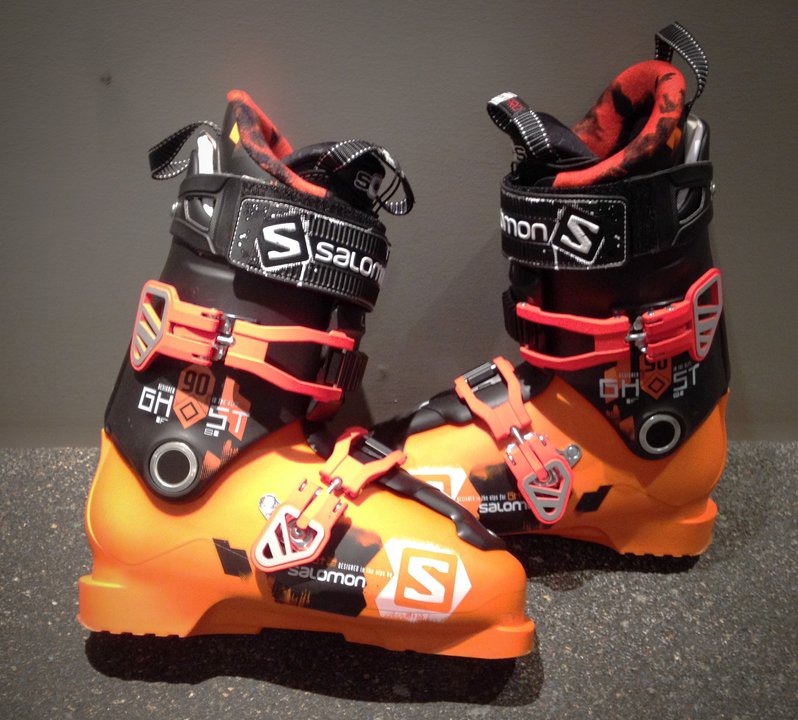
Comments